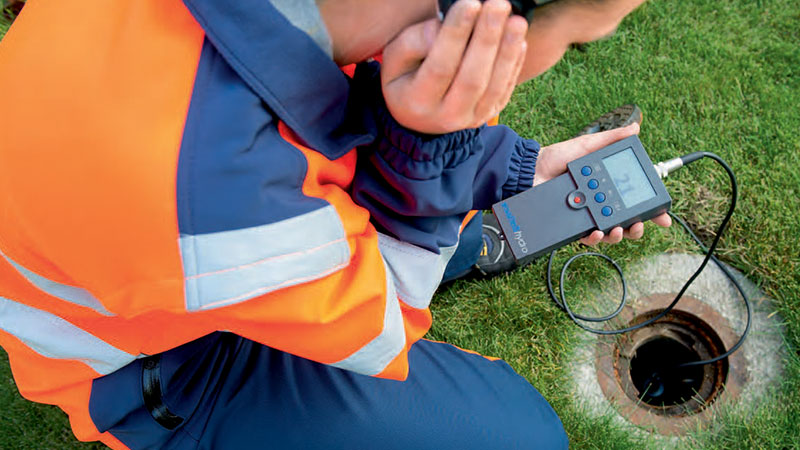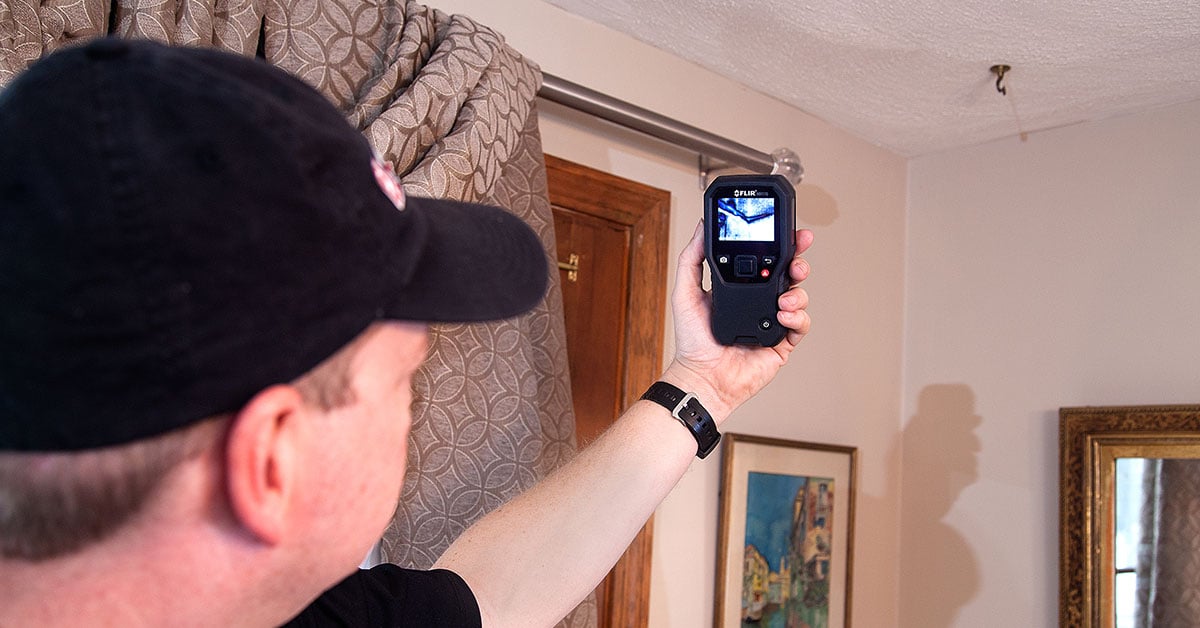Why Timely Water Leak Detection is Necessary for Preserving a Healthy Home
Why Timely Water Leak Detection is Necessary for Preserving a Healthy Home
Blog Article
Ingenious Solutions for Early Discovery of Water Leaks in Structures and Facilities
As the integrity of structures and infrastructure is vital, the challenge of very early detection of water leaks has actually spurred cutting-edge solutions that guarantee to revolutionize the method we safeguard against possible damages. From innovative leakage detection modern technologies to the deployment of IoT sensing units for real-time monitoring, the landscape of leak avoidance is developing swiftly. Artificial intelligence algorithms use a peek right into the future of leakage prediction, while thermal imaging offers a non-intrusive method for identifying hidden leakages. Automated water circulation analysis systems are reshaping just how leaks are identified and resolved, leading the way for an aggressive method to water leakage discovery. Each of these services holds the crucial to ensuring the dependability and durability of our constructed environment, triggering a change towards a more lasting and reliable future.
Advanced Leakage Discovery Technologies
Advanced leakage discovery modern technologies, outfitted with cutting-edge sensing units and formulas, play an important function in promptly recognizing and determining water leakages in numerous setups. These innovations employ a combination of acoustic, thermal, and electromagnetic picking up methods to spot leaks properly. Acoustic sensing units discover the sound of escaping water, enabling specific localization of the leakage source. Thermal imaging spots temperature modifications brought on by water leak, offering one more effective approach for leakage identification. Electromagnetic sensing units can determine changes in electro-magnetic areas brought on by water, supplying yet one more layer of leak discovery ability.

IoT Sensors for Real-Time Surveillance
In the realm of modern water leak discovery, the assimilation of IoT sensing units for real-time monitoring represents an essential advancement in enhancing positive leak detection capabilities. These sensing units offer continuous monitoring of water supply, offering real-time information on water circulation prices, stress variants, and temperature level adjustments. By leveraging IoT modern technology, these sensing units can spot even the smallest anomalies in water usage patterns, allowing early identification of potential leaks before they escalate right into significant concerns.
IoT sensing units send information to a centralized platform, where advanced algorithms analyze the details and create signals or notifications when abnormalities are identified. This real-time surveillance capacity enables homeowner or center supervisors to immediately deal with leaks, decreasing water damages, minimizing repair service expenses, and conserving water sources.
In addition, IoT sensing units can be integrated with building monitoring systems, enabling for automated responses to spotted leaks, such as shutting down water valves or activating pumps to minimize the effect of leaks. On the whole, the execution of IoT sensors for real-time monitoring significantly boosts the performance and efficiency of water leakage discovery in buildings and facilities.
Artificial Intelligence Algorithms for Leakage Prediction

One secret advantage of making use of artificial intelligence for leakage forecast is its ability to continually discover and improve its precision in time. As even more data is collected and fed into the algorithm, it can improve its predictions and adjust to altering conditions, eventually increasing the integrity of leak detection systems.
Furthermore, machine discovering algorithms can help in recognizing refined indicators of leakages that might go unnoticed by typical surveillance approaches. water leak detection. By assessing intricate information embed in real-time, these formulas can provide early cautions and alerts, permitting for prompt treatment and preventive maintenance to reduce potential water damages and associated prices
Making Use Of Thermal Imaging for Leak Discovery
Thermal imaging innovation offers a promising strategy for discovering water leaks in different systems and facilities. By making use of infrared radiation and temperature level variations, thermal imaging electronic cameras can recognize hidden leaks that are not conveniently visible to the naked eye. When water escapes from pipes or frameworks, it typically alters the temperature of the surrounding area, developing temperature differentials that thermal cams can record. These temperature level abnormalities are then translated into visible pictures, highlighting the precise place of the leakage.
One of the essential advantages of thermal imaging for leak detection is its non-intrusive nature. Unlike traditional methods weblink that might call for damaging right into walls or floors to locate leaks, thermal imaging permits non-destructive screening. This not just saves time and decreases costs but also decreases disturbance to the structure or facilities being evaluated. Additionally, thermal imaging can quickly check big areas, providing a comprehensive review of possible leakage sources in a timely way. On the whole, the usage of thermal imaging innovation enhances the performance and precision of water leak discovery, making it a useful tool for preserving the integrity of buildings and facilities.
Automated Water Circulation Analysis Equipments
Exactly how can automated water circulation evaluation systems revolutionize the discovery and management of leakages in various systems and facilities? Automated water circulation analysis systems supply a positive strategy to leak discovery by continuously checking water flow prices and patterns. By developing baseline information, these systems can promptly determine inconsistencies that may suggest a leakage, enabling timely treatment to stop extensive damage.
These systems make use of advanced algorithms to examine real-time information and provide instant signals when anomalies are found, allowing for quick activity to be taken. Additionally, computerized water circulation analysis systems can be integrated with building administration systems or IoT systems, boosting overall effectiveness and allowing remote surveillance capabilities.
In addition, the data collected by these systems can be used for anticipating upkeep objectives, browse around these guys aiding to recognize possible powerlessness in the facilities before leaks occur. Overall, the implementation of automated water circulation evaluation systems can dramatically boost leakage detection and management practices, inevitably bring about set you back savings, reduced water wastefulness, and raised sustainability in structures and facilities.

Final Thought
To conclude, the assimilation of innovative leakage discovery modern technologies, IoT sensors, machine knowing algorithms, thermal imaging, and Read Full Article automated water flow analysis systems provides ingenious options for very early detection of water leaks in buildings and infrastructure. These technologies allow real-time surveillance, forecast of leaks, and efficient discovery approaches to protect against water damages and wastefulness. Carrying out these options can assist in preserving the integrity and sustainability of water supply in different setups.
Report this page